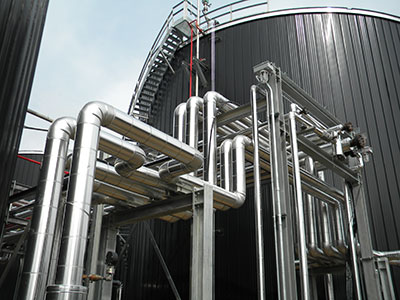If you are searching for a high-performance solution for pipe insulation, cellular glass often stands out. Many plant engineers face critical choices when density and durability matter.
Cellular glass pipe insulation typically comes in densities ranging from 100 to 130 kg/m³, providing stability, mechanical strength, and moisture resistance that suit industrial settings.

Cellular glass insulation is a material I rely on when system reliability is a priority. Its density directly affects compressive strength, load-bearing capability, and long-term thermal performance. Industrial context, like Hans Müller’s role, makes this even more relevant—his job requires maintaining tanks and pipes where temperature extremes and chemical exposure are routine. Let’s see how density impacts practical performance, what properties cellular glass offers, and how these factors help solve real-life problems.
What is the density of cellular glass?
The density of cellular glass pipe insulation is a major feature for industrial use. Many products offer densities from 100 to 130 kg/m³, which balances strength, weight, and insulation for high-stress environments.
Cellular glass generally offers 100–130 kg/m³ density, making it ideal for supporting heavy mechanical loads while resisting moisture and thermal bridging.

I see firsthand how density choices affect installation outcomes and long-term reliability. Lower densities mean lighter weight but less compressive strength. Higher densities provide more support—especially for large tanks or pipes—but may cost more. Hans, for example, must evaluate and choose products with density that fits his tank needs, resisting both crushing loads and avoiding water absorption. In industrial settings, cellular glass’s closed-cell structure guarantees stable density and uniform insulation over the years. No moisture can penetrate, no CUI issues occur, and maintenance won’t become a headache due to settling or sagging. I recommend specifying density in project bids, checking test certificates, and thinking through the whole lifecycle cost, not just installation day.
What are the properties of cellular glass insulation?
Cellular glass insulation provides a unique mix of benefits compared to other materials. It is non-combustible, does not absorb water, and resists most chemicals—key in harsh industrial environments.
Cellular glass insulation is non-absorbent, fire-resistant, chemically inert, and has high compressive strength, which makes it ideal for tanks and pipes.

When I look at industrial insulation failures, most problems trace back to poor material choices. Hans prioritizes non-absorption because CUI can risk millions in damages. Cellular glass’s closed-cell structure guarantees no water can get in, unlike fibrous insulations. Its fire resistance goes beyond standard ratings, performing even under direct flame, so it meets or exceeds European and international safety codes. Chemical resistance matters in chemical plants—it stands up to acids, solvents, and gases that would eat away other options. Mechanical strength from its density means slumping and compression are rare. As an engineer, I have confidence recommending it for tank bases, vessel sides, and cryogenic lines that face tough loads and conditions week after week.
What is the density of foam glass in kg m³?
In specifying insulation materials, exact numbers matter. Foam glass, another term for cellular glass, almost always comes in density ranges suited for heavy-duty jobs.
The density of foam glass insulation is usually between 100 and 130 kg/m³, which ensures stability on industrial pipes and tanks.
Density is not just a technical detail—it decides whether a tank stays protected or needs frequent repair. At 100–130 kg/m³, cellular glass matches mechanical demands without adding unnecessary weight to support structures. I advise checking with suppliers that offer test data to confirm the density declared. In Germany, where Hans works, regulations and plant standards demand rigorous proof; I always provide labs reports with the shipment. This density window is widely accepted, both for new builds and maintenance. The compressive strength at these densities lets cellular glass stand up to tank movements, seismic actions, and service traffic over years, not just months.
What is the R value of cellular glass?
Thermal performance is usually measured by the R value. Cellular glass insulates pipes and tanks by blocking heat flow and maintaining stable temperatures, which is critical in processes like cryogenic storage.
Cellular glass typically offers an R value of about 3.1 to 3.4 per inch, delivering reliable insulation for industrial systems.
R value is the language engineers use to compare insulation options. Cellular glass doesn’t sag or settle, so its R value stays consistent through years of exposure. In chemical plants, maintaining set temperatures in storage tanks is not just about efficiency but also about safety and process control. Hans looks for material that holds its insulation value, regardless of humidity or repeated freeze-thaw cycles. I routinely conduct field performance checks and find cellular glass maintains its R value better than other mineral or polymer-based choices, especially after years of tough service. The result is lower energy costs, fewer temperature fluctuations, and compliance with strict plant standards.
Conclusion
Cellular glass pipe insulation offers ideal density, strength and reliable insulation performance, making it the best choice for demanding industrial environments.

